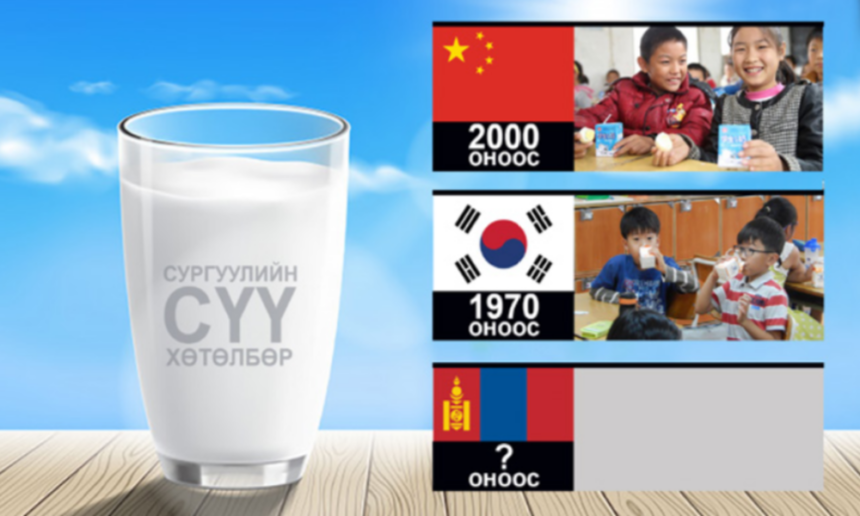It is said that happiness and success of the individual very much depend on the amount of nourishment obtained in childhood. If nutrients needed in childhood are not received, the income as an adult could be affected. As a matter of fact, microelements such as iodine, iron and calcium could be linked to economic development. Such conclusions were reached by 2019 Nobel Prize winning MIT economists Abhijit Banerjee and Esther Duflo. This conclusion is based on studies of poverty and government efforts to solve poverty around the world, included in their book called “Poor economics” in 2010.
Generally, social inequality and the source of poverty are evolving during the childhood of the individual and in some cases even before birth. Policymakers in many countries have therefore implemented special programs for young children, particularly those of school age for example, breakfast or school milk programs for young children.
China and South Korea
China has instituted the School Milk Program in 2000 to reduce poverty and improve the quality of education by compensating for malnutrition of children. They have organized numerous activities at the national, provincial and city levels, including the establishment of units and suppliers responsible for this program, as well as certification and assurance. Consequently, the label “school milk” emerged. Within 5 years, it covered 2.4 million students from ten thousand schools in 28 provinces and 60 cities. Studies have shown that children, who drank two mugs of milk per day, have grown faster than children, who did not drink milk (by 7.2 mm in 6 months), also their teeth were whiter than of those who did not drink milk. This program has helped the young generation of China to grow taller and have healthier teeth.
The School Milk program has a beneficial impact not only on the nations’ health but on China’s economy as well. The dairy industry has been developed and brought a qualitative upgrade to its value chain. China produced 8 million tonnes of milk in 1999, 14 million in 2002 and 35 million tonnes in 2017.
South Korea has a School Breakfast Program implemented since 1953 with the help of the UN Children’s Fund. Launched after the Korean War, the program covers all elementary, middle and high school students, regardless of their household finances. And in the 1970’s, the School Milk program was introduced as well. Research has shown that school children with dairy programs get about 1.5 times more protein than children whose school has not yet implemented the program and receive more than half of the required minimum quantity of the calcium.
Studies in some countries have shown that young children not only receive the necessary amount of protein and other nutrients from dairy products, but also develop a habit of consuming dairy products for life. The benefits of this program are generally recognized and implemented internationally.

Source: Dairyasia.org, 2017
Mongolia
In Mongolia, the Breakfast Program was implemented in middle schools in 2006. Unfortunately, this program is measured by the amount of money spent, not the nutritional value that each child receives. Initially, the cost per child was estimated at 300 MNT and a year later at 600 MNT. In spring 2019, the Parliament approved a law which replaced the Breakfast program with a Lunch program. Social media criticism emerged as the when lunch budget increases, the price to buy products increases as well. Politicians merely care about the amount of money spent on programs rather than being concerned with the amount of calories and nutrients delivered. Mongolia has no evaluative culture and official studies that would summarize the results of the Breakfast Program are non-existent. According to some parents, this program helps school children, especially those from low-income families.
However, this type of program is designed to cover the nutritional and vitamin deficiencies of young children. According to the 5th National Nutrition Survey of the Population of Mongolia, 7 percent of children aged 6-11 years are stunted and 3 percent are thin. Also 22 percent of all children are overweight and 6 percent are fat.
In this context, the experience of other countries has proven that it is more efficient to include milk specifically in our Lunch program. In Mongolia, only 5 percent of school children use dairy at school. (Research on Secondary School Food and Service, 2018). In fact, we can easily provide sufficient milk to our children.

Source: Dairyasia.org, 2017
As can be seen from this table, Mongolia has all the potential to increase milk supply contrary to China. But despite the availability of milk, the supply infrastructure is lacking. Dairy products are more delicate and require more stringent standards and controls. While poverty is at the heart of many social issues, it is crucial to address the fact that one necessary and ignored decision is the introduction of milk to the children’s Lunch Program.
2020.01.15
Trans. by Riya.T and Sungerel.U












